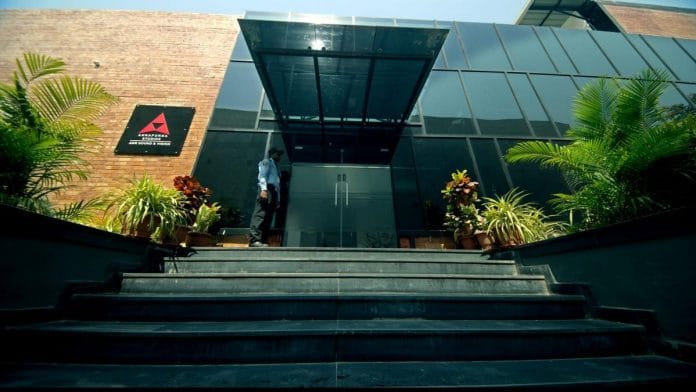Hyderabad: In a Rado ad, Katrina Kaif glides across a golden desert in a shimmering dress to match. Moments later, she’s in a palace straight out of Rome. Except the ad shoot crew never left India. Everything was shot inside Hyderabad’s Annapurna Studios.
From Parliament House to the Eiffel Tower, waterfalls to snow-capped mountains, any location can be summoned inside its 10,000 sq ft, climate-controlled virtual production stage with a 45 ft ceiling. The village backdrop in the song ‘Kurchi Madathapetti’ from Guntur Kaaram was conjured entirely in the virtual studio.
Annapurna Studios, owned by the superstar Nagarjuna’s family, has turned 50 at a time the Telugu film industry is thriving and racing ahead of other beleaguered movie industries in India. Its cutting-edge technology has made it the go-to studio for VFX, high-end post-production, and virtual shoots.
What began in the 1970s as a dedicated shooting space to reduce Telugu cinema’s reliance on Tamil Nadu studios is today an entertainment powerhouse. While many film studios founded in the 1950s to ’70s elsewhere — from the iconic RK Studios to Kamal Amrohi’s Kamalistan Studios in Mumbai — have been shut down or sold off, Annapurna is going strong. It’s now a hub not just for Telugu filmmaking, but for Bollywood and Kollywood as well. It also houses a bustling, all-hands-on-deck film school that has turned out around 2,000 graduates in the last 12 years.

Inside the VFX studio on a Wednesday afternoon, around 300 professionals silently work on scenes for upcoming blockbusters, including the Telugu film Dacoit, starring Adivi Sesh, Mrunal Thakur, and Anurag Kashyap. In one part of the room, a screen loops the trailer of the Mohanlal hit L2: Empuraan, whose post-production was done here.
From the juggernaut Pushpa films, to the Tamil biographical action film Amaran, to the Telugu romance Thandel, filmmakers across industries are turning to Annapurna Studios for that final edge in post-production.
“I remember the inauguration of the studio by [former President of India] Fakhruddin Ali Ahmed very well. It looked like a shed back then. When my father was building it, it was empty most of the time. Now, there are traffic jams inside the studio sometimes, with the number of shootings going on,” said 65-year-old Nagarjuna. “I feel both happy and sad to see it thrive now. I wish he could see it.”
Nagarjuna added that his father—the celebrated actor Akkineni Nageswara Rao (ANR)— put aside everything to build Annapurna, which opened its doors in 1975 but was officially inaugurated the following year. ANR died in 2014, and the studio is now helmed by Nagarjuna and his niece Supriya Yarlagadda, who serve as director and executive director, respectively.
This place was built by a man who was a star himself. He’d worked in all kinds of conditions and knew exactly what kind of workspace he wanted to offer
-Satyanandam V, COO of Annapurna Studios
“I went to PM Modi to gift my father’s book, I told him proudly that we have the best studio in the country,” he said.
The studio is not just a content maker but also an infrastructure and service provider, according to Sushma K, chief finance officer.
“We have one of the best post-production services in the country and are one of eight Atmos-certified greenfield Dolby soundstages in the world. We have the first Dolby cinema in India,” she added.
Earlier this year, director SS Rajamouli unveiled the Dolby-certified post-production facility, the only one of its kind in the country. The certification from the British-American company means the studio is calibrated to deliver immersive Dolby Atmos sound, giving it a distinct advantage for filmmakers seeking world-class audio quality.

It’s all in line with the original vision—to help produce cinema that can compete with the world.
When Annapurna was launched, it had to negotiate with the government just to build a road. On the outskirts of Hyderabad back then, it was barely accessible. Today, it’s a landmark in Banjara Hills, the city’s most coveted pin code— home to stars, filmmakers, boutique hotels, and real estate owned by the who’s who of the entertainment industry.
“Hyderabad city back then ended at Panjagutta, where cheetahs used to roam. Every month, he [ANR] put in everything he had to build the first floor, and then he realised there was no road, and people could not come to use the studio’s facilities,” said Yarlagadda. Nagarjuna even encountered a cobra the first time he came to see where the studio would stand.
The biggest danger now are the cars snaking up the 22-acre campus. Annapurna Studios is firing on all cylinders, from producing and distributing films to keeping its 12 studio floors nearly full year-round. It’s become a formidable force in Telugu filmmaking in particular, and Indian cinema in general.
Also Read: Sooraj Barjatya’s sanskaar-sadgi-shaadi formula is now ready for OTT era
A 30-year bet on the future
It was no overnight success story. For around 30 years, Annapurna Studios ran at a loss, sustained by the paychecks of its film star founder Akkineni Nageswara Rao and then his son Nagarjuna.
Filmmakers assured Akkineni Nageswara Rao that they too would shift base to Hyderabad, but in reality, it was ad hoc. They would rent a guesthouse, shoot, and go back to Chennai. Hyderabad simply wasn’t where big-budget Telugu cinema was made yet. So ANR kept acting, and Nagarjuna made his debut in the late 1980s too.
This was around the time that things started changing. Telugu films were being shot in Hyderabad, and actors to technicians made the city their home. Film Nagar took shape, with its own unions and residential enclaves. Big names began renting Annapurna’s studio floors and working on in-house productions like Siva (1989), Prema Katha (1999), Rajanna (2011), and Hello (2017).

Yet, breaking even took more time.
“It was the family who was keeping the studio alive. I remember when Nagarjuna started working, he was putting money into the studios, and was taking a salary,” said Supriya Yarlagadda, ANR’s granddaughter and executive director of Annapurna Studios since 2000.
Yarlagadda started working at 18, tasked initially with chasing down producers who hadn’t paid the money they owed for shooting in the studios.
“When I joined, the electricity bill was Rs 12,000, and the studio didn’t have money to pay. I wrote a cheque, but our employee told me there was no money,” she said.
She slowly brought order to the chaos, regulated payments and, with the help of Nagarjuna and his wife Amala, put together the team that would steady the studio for the next 20 years.
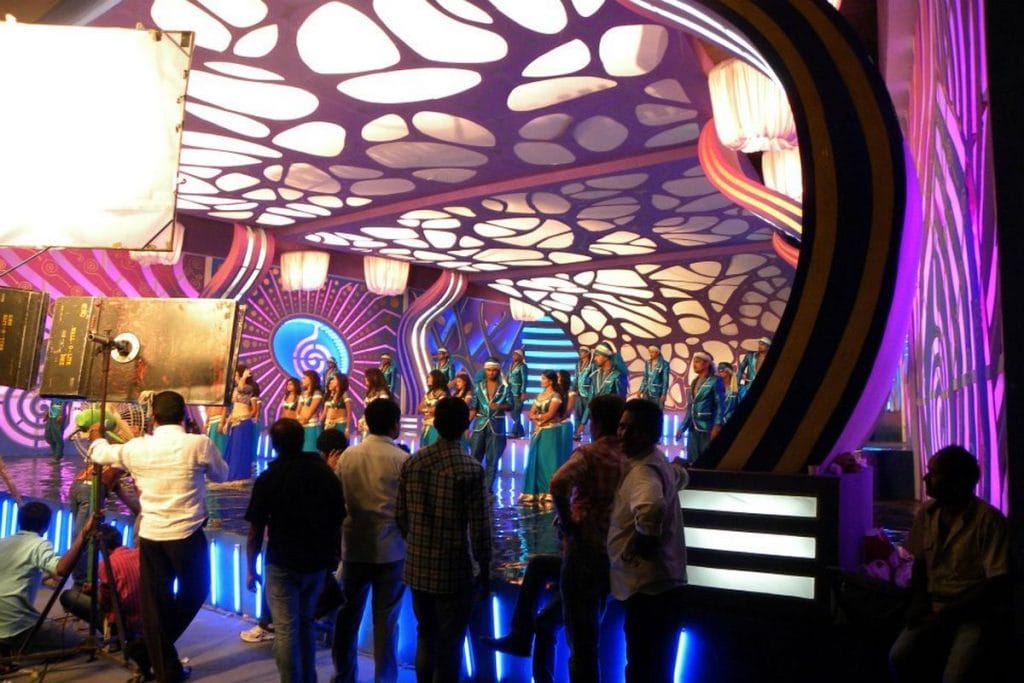
Nagarjuna, meanwhile, held on to his father’s vision of Annapurna as the place where “dreams come true”. He wasn’t just headlining blockbuster films, but also funding the studio and constantly pushing for upgrades. Whenever he came across new filmmaking technologies on various projects, he’d immediately check with ANR if Annapurna could adopt them.
Along with that innovation-oriented approach bolstering the studio’s reputation, there was also a formidable team keeping the wheels running. It’s not all in the family.
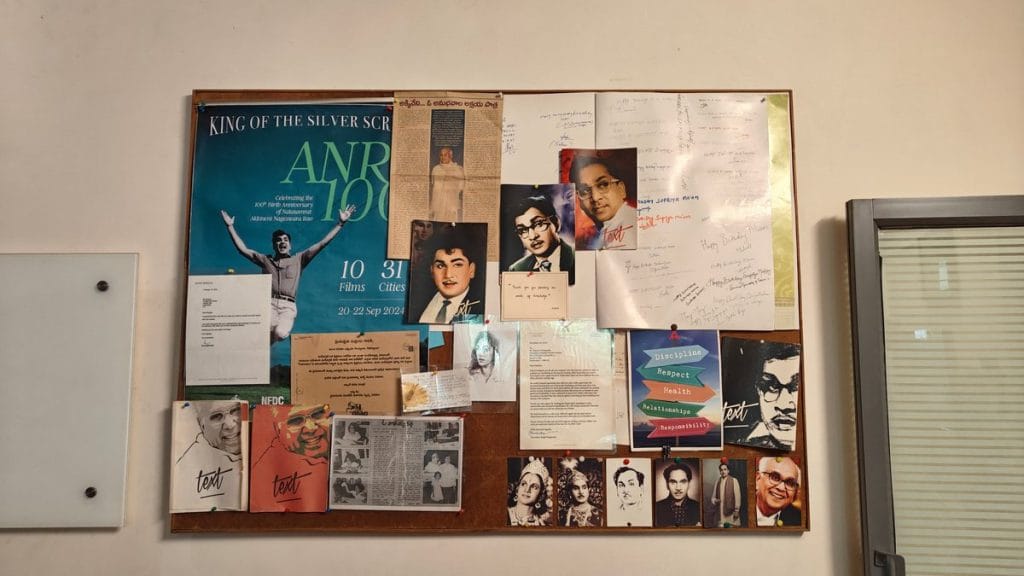
Running the dream machine
There’s a structure to how the studio functions, with clear roles, departments, and an emphasis on technology. But chaos is routine in the film business, and the team is prepared for it. They all bring expertise from different professional backgrounds.
Chief Technology Officer CV Rao has a background in the entertainment industry, but CFO Sushma K and Chief Operations Officer Satyanandam V come from entirely different worlds — finance and the armed forces, respectively.
“The only thing constant here is the unexpected,” said Sushma, laughing. “I once received a call about a drone flying over the studio’s Bigg Boss Telugu set. We had to quickly think on our feet about how to deal with it, without footage leaking.”
The comfort and efficiency at Annapurna Studios are unmatched. Every aspect is taken care of with such precision, allowing artists like me to focus purely on the craft. It almost feels like a second home
-Mahesh Babu, actor
From on-set mishaps to star demands to traffic jams in the campus to fans trying to sneak in, Sushma handles it all. She also keeps a hawk’s eye on the studios’ finances, with revenue streams diversified across studio rentals, production, and the in-house film school.
On the operations front, Satyanandam V, brings a disciplined, methodical approach. With a background in the armed forces and IT, he was recommended to Nagarjuna by a former boss.
“Nagarjuna was looking for someone to handle operations — ideally someone not from the film industry,” Satyanandam said.
Over the years, he has overseen major infrastructure upgrades, including makeup rooms integrated with the studio floors. These eliminate the need for vanity vans and their power-guzzling generators.
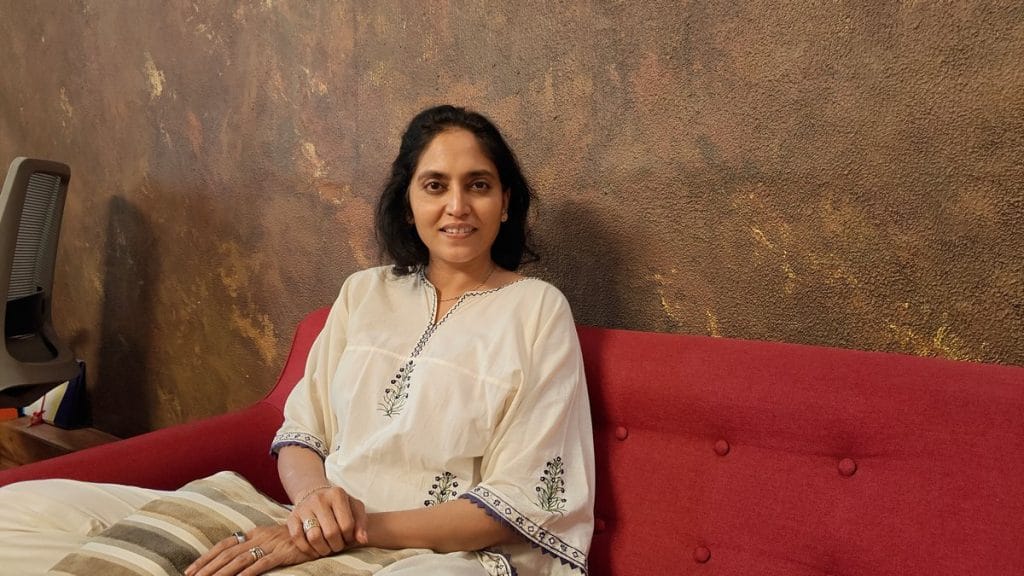
“It also ensures the privacy of the bigger stars, who can directly go to shoot without needing to step outside,” he added.
The change may appear minor, but for stars dealing with heat, humidity, and prying drone cameras, these rooms mean protection from the elements, privacy, and the preservation of their Instagram-worthy looks. Many actors swear by the services provided at the studio.
“For me, the comfort and efficiency at Annapurna Studios are unmatched,” said actor Mahesh Babu, whose latest release Guntur Kaaram was partly shot on the virtual production stage. “Every aspect is taken care of with such precision, allowing artists like me to focus purely on the craft. It’s always a pleasure to return here. It almost feels like a second home.”
Even foreign locales can be recreated (in the virtual studio), and no one can tell the difference. It is the future of filmmaking
-CV Rao, CTO of Annapurna Studios
By concentrating the crew and cast on one floor, the studio saves both time and money.
“This place was built by a man who was a star himself. He’d worked in all kinds of conditions and knew exactly what kind of workspace he wanted to offer,” said Satyanandam. He’s also streamlined the rental process, with contracts, timelines, budgets, and even extensions of shoots all run in tight fauji style.
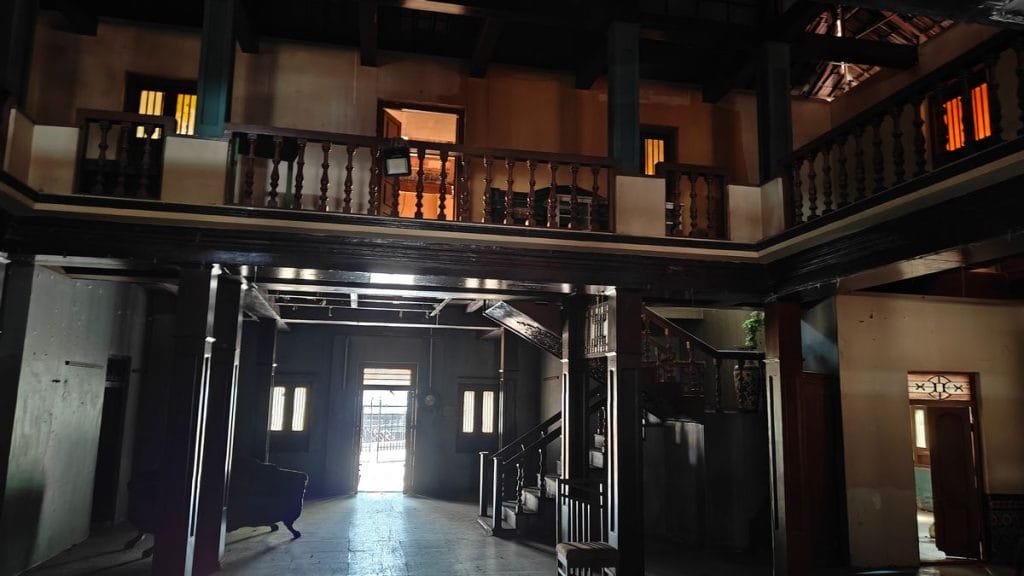
The studio’s occupancy rate stands at 96 to 98 per cent, according to Satyanandam, with television shows, films and web series being shot simultaneously. While one floor currently houses the set of a popular Telugu game show, another is being used for rehearsals for an upcoming Chiranjeevi film. A separate part of the studio is home to the set of Bigg Boss Telugu, which has completed nine seasons, out of which seven were hosted by Nagarjuna.
From the moment a production signs a contract with the studio, Annapurna’s team takes over everything from set creation to shoot logistics. Sushma K recalled that when Kiccha Sudeep wanted real plants for the forest scenes in the Kannada fantasy film Vikrant Rona 30 lakh plants were brought in. When Covid struck, the team took care of them throughout the lockdown, and once restrictions lifted, Sudeep resumed shooting with all the real plants he had asked for still in place.
Once the footage moves to post-production, the studio’s tech-whiz crew kicks into gear.
Lights, camera, LED screen
Mountain vistas to distant galaxies, green screens allow filmmakers to bring their visions to life in post-production. But they come with headaches like uneven lighting and colour spill. Fixing shadows, green tones, and precise colour keying is time-consuming, often stretching both budgets and patience. Add to that actors having to perform against a blank green screen, with no sense of environment.
Annapurna’s Virtual Production Stage offers a way around that. With curved LED screens that are rich in detail, dynamic, and responsive to real-world lighting, filmmakers can create immersive environments without having to build and dismantle elaborate sets.
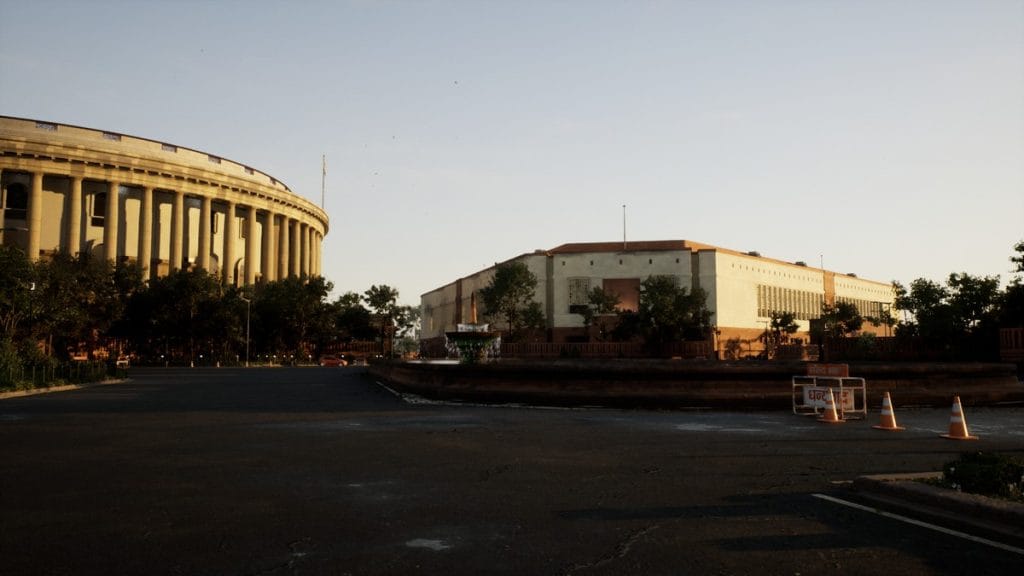
Just about any background, from the Charminar to Champs-Elysees, can be projected. Actors can interact with their surroundings, while directors and cinematographers capture shots in-camera that were previously possible only in post-production.
“I was a bit apprehensive because this was my first time working with a virtual production stage. But this can actually get very addictive if you have time in hand,” said director Gautham Vasudev Menon, who shot a Casagrand ad here. “Even with limited time, these guys were able to pull out the assets I needed and I am looking forward to doing more now.”

The setup includes a 60-ft-wide, 20-ft-tall curved LED screen, two movable side screens, and a movable ceiling panel. It’s all designed to help the camera pick up depth and detail from every angle. The screens blend seamlessly with real-world lighting, enhancing the realism of every shot.
“It helps keep the budget in check for many filmmakers, especially when they decide on an extra song or forget to film some sequences during their outdoor shoot. Even foreign locales can be recreated, and no one can tell the difference. It is the future of filmmaking,” said CTO Rao.
Annapurna’s digital intermediate facilities — where filmmakers, editors, and cinematographers review and finalise scenes — are equally high-tech. Equipped with Barco 4K projectors for crystal-clear visuals, Baselight colour grading systems, and plush chairs similar to Gold-class theatre seats, these rooms are built for chiselling raw footage into a film.

Each department in post-production is secured with thumbprint access and a strict no-leak policy. Each production is guarded as zealously as a state secret.
“We offer solutions,” said Rao. “When a filmmaker walks in with a script or even an idea, we have all the facilities, from floors to technology, to solve any roadblock and ensure that he has the exact kind of film he wants.”
Much of this innovation, Rao added, has been driven by Nagarjuna.
“He even calls me from the shoot, asking about existing facilities and if we can update. I then create a pitch. His only voice of caution to me is, ‘Rein in the cost a bit’,” he chuckled.
A new home for Telugu cinema
For years, Telugu films were made in Chennai and at some point Akkineni Nageswara Rao got tired of it.
He was a household name in Andhra Pradesh, but in Chennai, Telugu actors and directors often had to wait their turn behind their Tamil counterparts for studio access. He was also homesick and wanted his children to grow up speaking Telugu. His solution was to sell his Chennai house and open the industry in Hyderabad.
A quintessential family man, he named the studio after his wife, Annapurna — a tribute to the partner who had stood by him through the move from Chennai to Hyderabad. He even planted many of the flowering trees that still dot the campus.
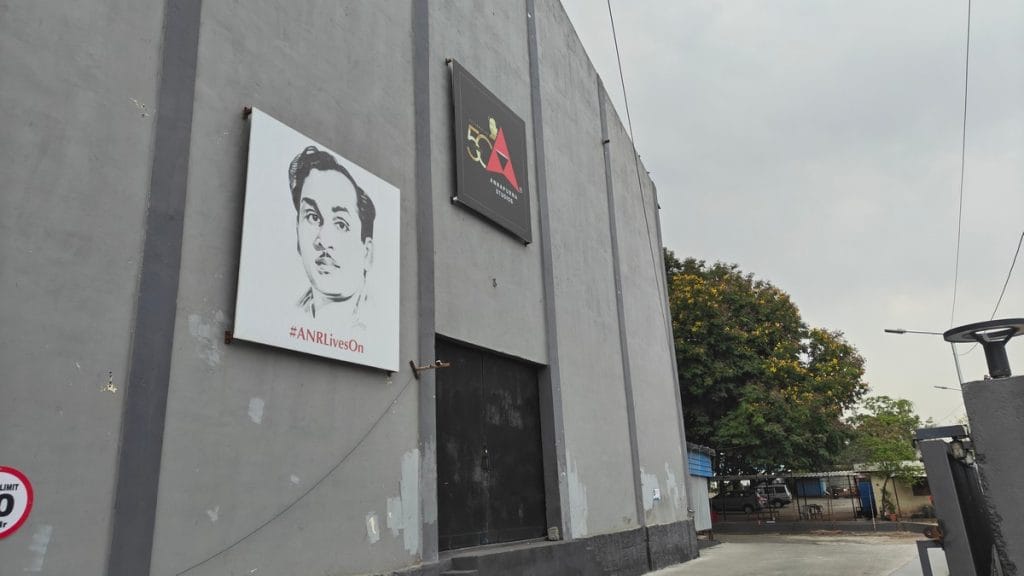
“He would pluck the season’s first mango for her, and attend to her when she was in bed during a prolonged illness,” said Supriya Yarlagadda. “He set the bar very high for the kind of men one should be like. I think his understanding of women also came from the fact that in early life, he played the role of female characters, travelling from one village to another.”
But there was a problem. The land he chose had no road leading to it. And so he invited President Fakhruddin Ali Ahmed to inaugurate the studio.
“Grandfather was told that the government did not have the money to give for building a road, especially with nothing else around it. Roads can only be built for Presidents of the country. That is what gave him the idea,” said Yarlagadda.
We provide the kind of infrastructure and facilities that make filmmakers from all languages come here for post-production. A lot of the time, I do not get the chance for my own films and have to stand in a queue
-Nagarjuna
Ahmed agreed to do the honours. But then ANR got a call from the President’s office informing that Ahmed would arrive in a helicopter. Fortuitously for ANR, there was no space for a helipad. The road was still needed.
In the end, Ahmed landed at Begumpet airport and travelled to the studio with his entourage by the newly built road. Annapurna Studios was officially inaugurated on 16 January 1976
Yarlagadda fondly recounted her grandfather’s vision for the studio as a place where dreams could be fulfilled. A meeting ground for actors, producers, and filmmakers. One of the filmmakers to come on board was Ram Gopal Varma, who made his first film Siva (1989)—a gritty student-political thriller starring Nagarjuna—at Annapurna.

“One of my favourite memories of my father and this studio is the premiere of Siva. He told me that it will be one of my highest grossers, not just for then but future too,” said Nagarjuna, visibly moved as he spoke.
ANR was right. Siva was a blockbuster, earned Varma the Nandi award for Best Director, and was remade in Hindi the next year. The film turned Nagarjuna into a star and established his reputation for working with first-time directors.
Back when ANR moved to Hyderabad, he was so miffed at the step-motherly treatment given to Telugu cinema in Chennai that he told producers he would only act in films made in Andhra Pradesh. The only exceptions he made were for Vahini and Venus Studios, where he had long-standing ties.
But now, in a full circle moment, Tamil makers are making a beeline for Annapurna Studios, often choosing Hyderabad over Chennai for post-production.

“The post-production facilities at Annapurna Studios are truly world-class,” said Rajkumar Periasamy, director of the Tamil hit Amaran. “The technical finesse and attention to detail brought a remarkable polish to Amaran. Their commitment to quality played a significant role in realising our vision.”
The studio also has a robust distribution wing that handles not just Telugu movies but also dubbed films from other languages.
“It was Nagarjuna who took me under his wing. He gave me the freedom to explore newer businesses that we could venture into. That’s how we got into the distribution business,” said Saibaba N, Distribution Head at the studio. “Today, if we are one of the leading distributors in the industry, it is purely because we conduct our business with complete transparency. Such were the business principles laid down by our founder.”
Annapurna is preparing for the next phase now — to work with AI and become the first studio to get motion capture. With the tie up with Dolby Sound post-production, it’s looking to attract more projects not just from the South but Bollywood too. For the next 50 years, it’s betting on two things: continuous technology upgrades and the next-gen filmmakers its nurturing at the homegrown film school, set up in 2011.
Also Read: How big stars and bloated blockbusters are bleeding Bollywood dry
Learning on location
A large Oscar statue stands near the administration block of the Annapurna Institute of Film and Media, almost like a goalpost for its students’ future.
Nearby, two students keep score in a sweaty badminton match while another group discusses assignment feedback.
Set in the Annapurna Studios campus, the institute’s interiors pay homage to the graduation films made by its students, with rows of posters lining the corridor. Unlike many film schools in India, the curriculum here is frequently updated to keep up with industry trends and shifts.
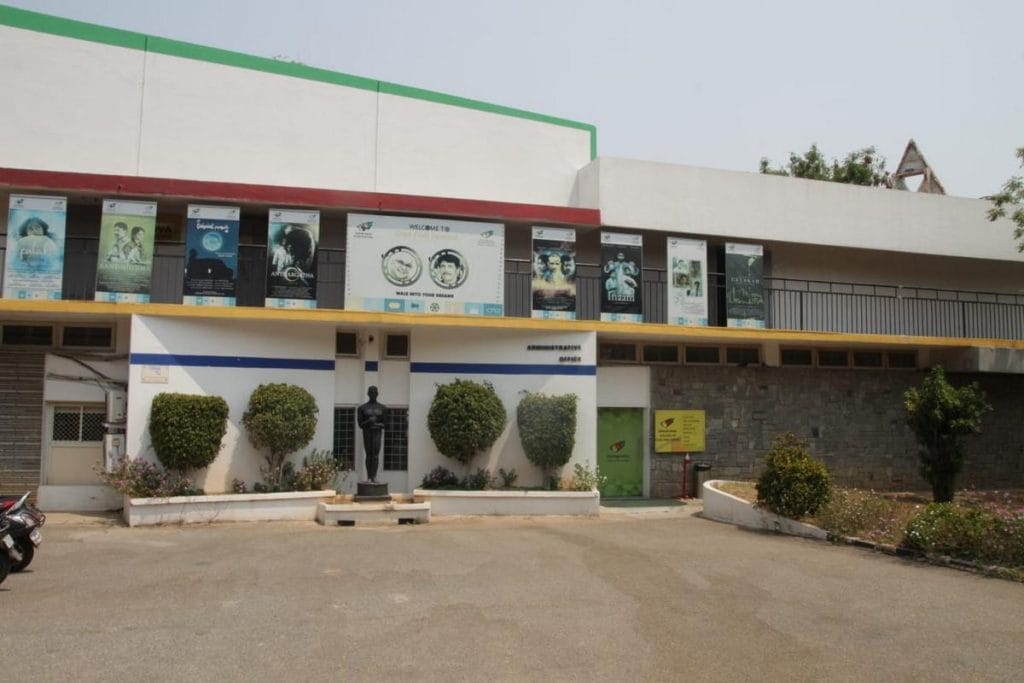
The institute offers undergraduate and postgraduate degrees in filmmaking, along with short-term courses in acting, VFX, animation, and advanced compositing. Students must make a graduation film at the end of their course, which is then screened for faculty and the board. This process includes inputs from the Akkineni family, especially Nagarjuna.
“The idea behind setting up the institute was like having a medical college in the premises of a bustling hospital,” said Nagarjuna. “They get to witness the experts handle the equipment. We take permissions from directors to ensure the shoot is not interrupted. They already know and have worked with special effects even before they graduate.”
For many students, who come not just from Hyderabad but from Mumbai, Kochi, and Delhi-NCR, it’s a dream to study in the same space where their favourite actors, filmmakers, and cinematographers drop in to give advice and tips.
For undergrad Ekanch Jain, listening to Anurag Kashyap was an item checked off his bucket list.
[Annapurna film school graduates] are going to become the chosen crew, not because they are trained and efficient, but because they will deliver
-Amala Akkineni
“It wasn’t just a masterclass; it was a life moment. To meet your cinematic idol, interact, discuss films, and be heard not as a fan but as a fellow filmmaker — that kind of validation is rare. That session didn’t just inspire me, it affirmed that I was on the right path,” said Jain.
The institute aims to bridge the growing demand for audio-visual content and the lack of trained technical experts. Equal importance is given to honing students’ creative instincts and technical know-how.
“They learn to make do with tight budgets and tight timelines,” said Amala.
“We have also brought in green production so they don’t damage the environment while doing an outdoor shoot.”
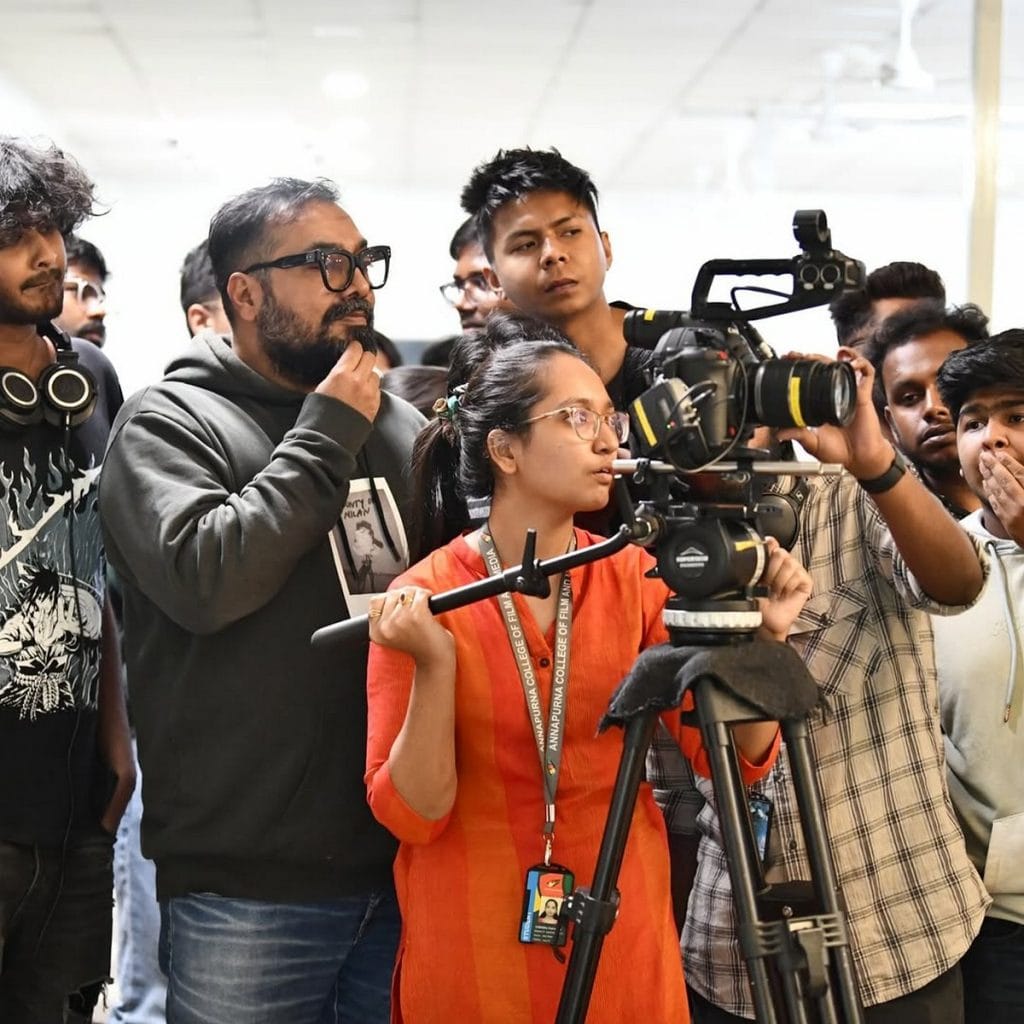
The first day can seem like a fairy tale, but integration courses quickly ground students. They’re counselled about the courses, where the undergraduate degree comes with three years of lectures, practicals, and internships.
“They get to see how real films are being made, and the experience helps them acquaint themselves with the industry from their first year,” said Manupriya Bali, Head of Human Resources and Industry Interface.
Stars and star-makers regularly visit for guest lectures. In the last few weeks, Gangs of Wasseypur director Anurag Kashyap and Tamil filmmaker Lokesh Kanagaraj, known for films like Vikram and Leo, held workshops. The Akkineni family’s cross-industry ties help bring in some of the biggest names.
From taking outdoor shoot permissions to writing dialogues and staging scenes, students are trained to handle the entire process.
“They are going to become the chosen crew, not because they are trained and efficient, but because they will deliver,” said Amala.
Some alumni are already on the rise. Tanya Chhabria edited Vikramaditya Motwane’s Netflix series Black Warrant, while Suhas C is the programming head for the South contingent at TVF.
“My greatest takeaway has been my comprehension of the whole filmmaking process, from ideation to distribution,” said Suhas. “In addition to teaching the art, Annapurna also taught us the process — how to organise, carry out and deliver. It has been simpler for me to plan and oversee projects at TVF because of that knowledge.”
Next year, the institute will introduce AI in its curriculum. The future has already been planned out, for both the studio and the institute, and by extension, for the Telugu film industry itself.
“We are planning at least three films from the studio, not just from the family, but bringing actors from all over. It honours the vision of my father. Of bringing in talent. Like he used to say, ‘dreams come true here,’” said Nagarjuna.
There are also plans for a film starring Nagarjuna and his sons, actors Naga Chaitanya and Akhil Akkineni.
“We provide the kind of infrastructure and facilities that make filmmakers from all languages come here for post-production. A lot of the time, I do not get the chance for my own films and have to stand in a queue. I’m very happy about that,” he said, laughing.
(Edited by Asavari Singh)



